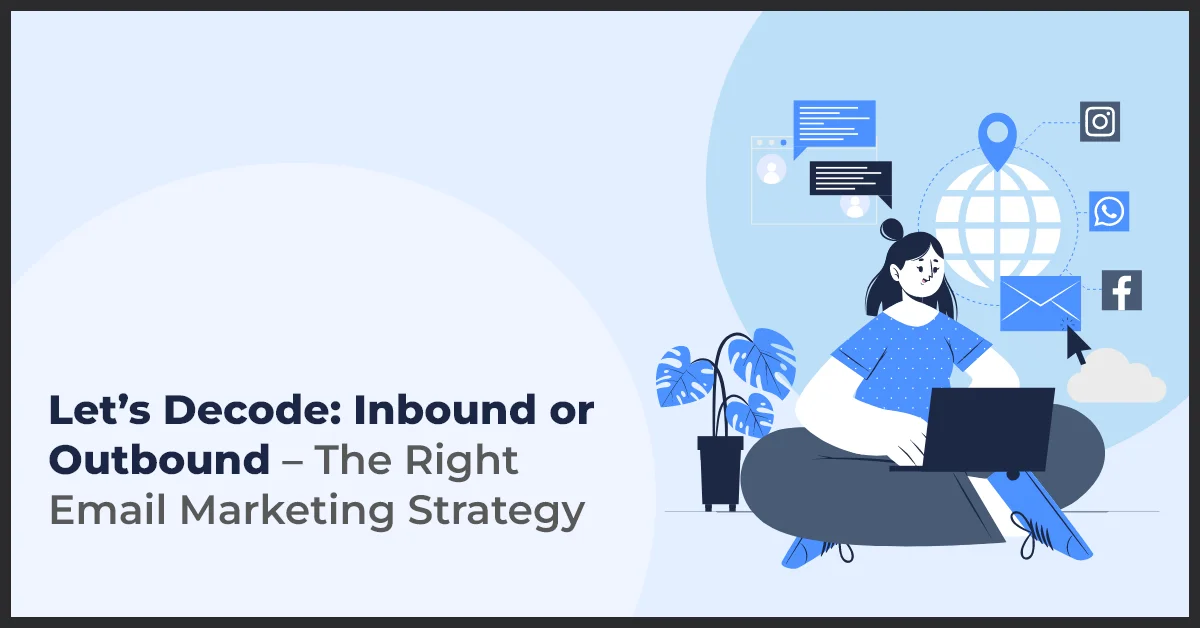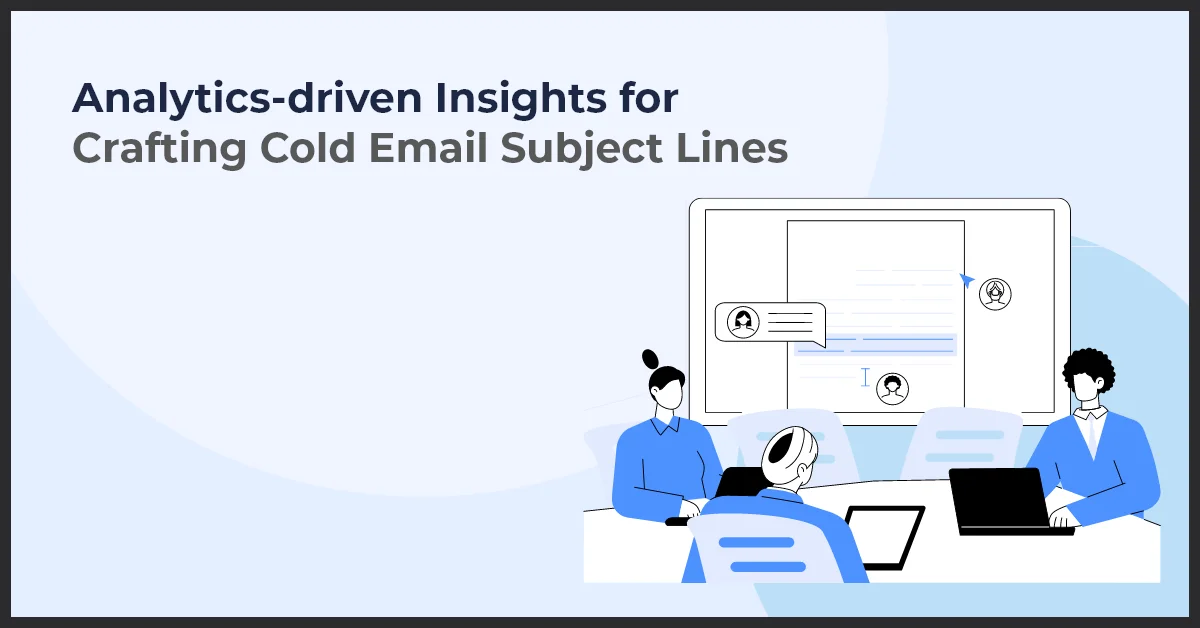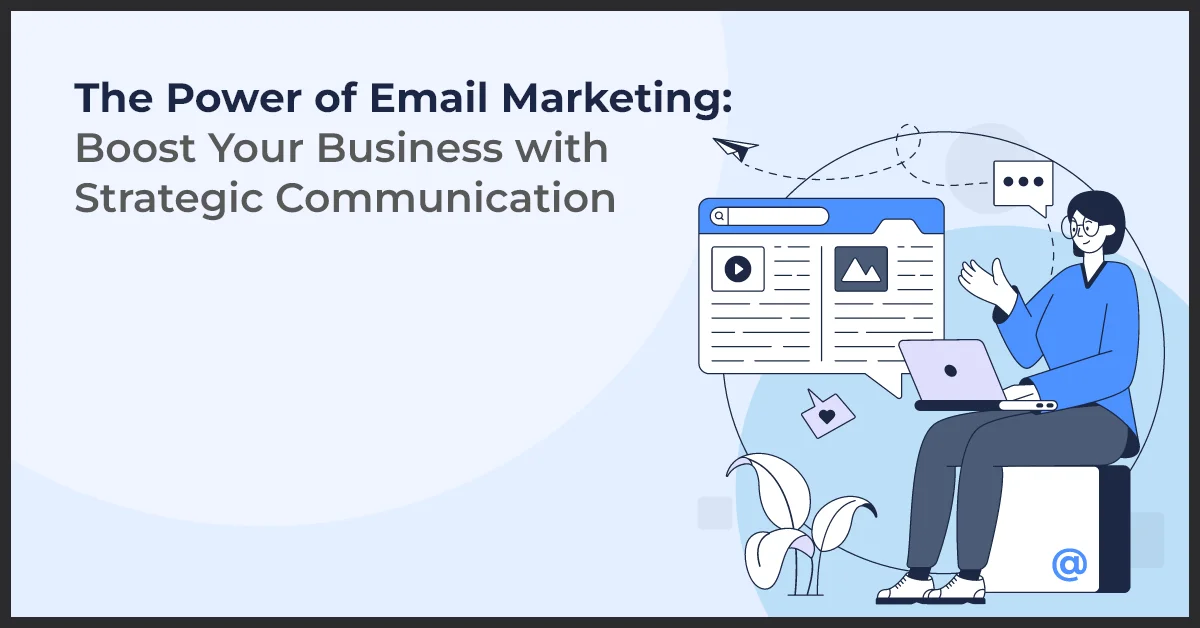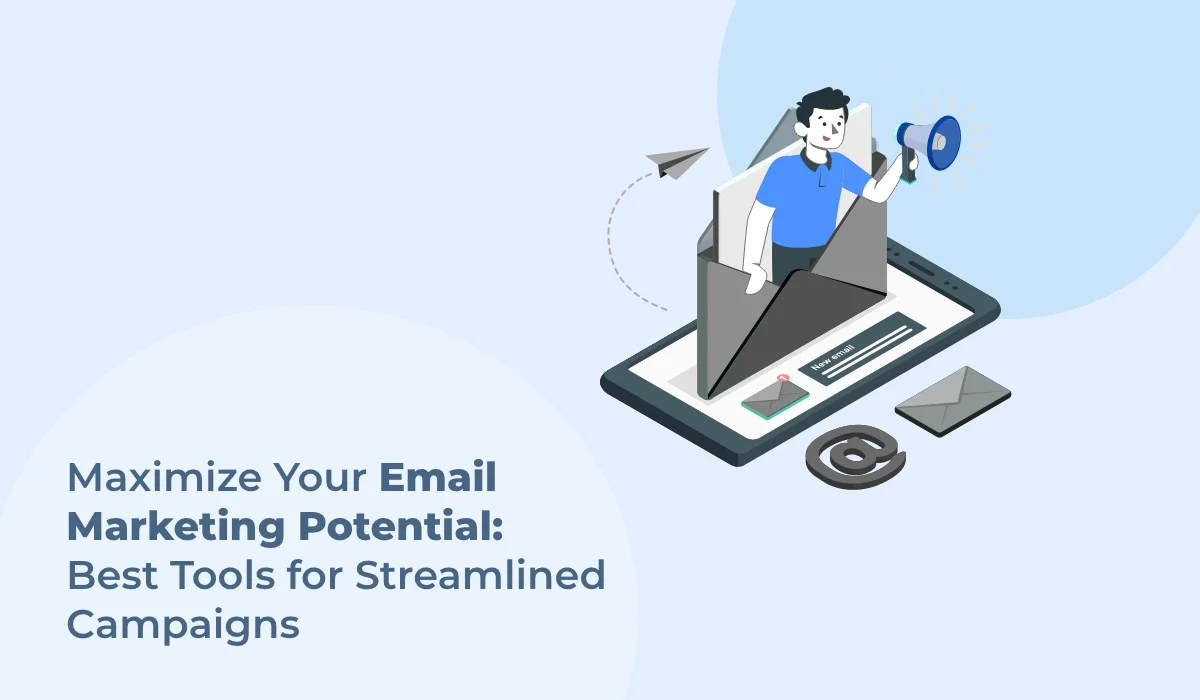Inbound vs Outbound: Choosing the Right Email Marketing Strategy

Published on: April 20, 2023
Updated on: March 10, 2025
2087 Views
- Email Marketing
9 min read
Many companies are still unsure whether an email is an inbound or outbound form of marketing. The truth is, it is both.
Amid cut-throat competition, attracting targeting audience with a single technique can fall short. This is why companies invest in various forms of marketing that can help them generate traffic, leads, and eventually boost sales.
In this blog, we are going to settle the years-long debate—is email marketing inbound or outbound?
Inbound Email Marketing
Inbound email marketing comprises informational and personalized content and experiences to attract the target audience. Inbound email is advertising targeted at people who have shown interest in your products or have interacted with your business.
Inbound email marketing is used to cultivate the interests between a customer and your company by sharing relevant content with them. It can include infographics, blog posts, tutorials, how-to videos, and many more.
On the whole, email marketing targets customers through emails. The revenue from email marketing is predicted to reach around 17.9 billion by the end of 2027. Thus, it is necessary to strategies and create best practices to get the most out of email marketing, such as increased traffic, leads, retention, and sales.
Benefits of Inbound Email Marketing
Increases Sign Ups
With valuable content like tutorials, blog posts, newsletters, webinars, or infographics, you can build an organic email contact list. Once you start sharing relevant and value-generating information with your customers, they will not be flagging your email as spam, which will help in building the reputation of your firm.
Organic Brand Awareness
When consumers hear from you through blogs and emails, they tend to learn more about your brand and offerings. Plus, they are more likely to refer your brand to others through word of mouth. This leads to increased sales and boosts your online presence, all in all leading to building organic brand awareness.
Comprehensive
Inbound email marketing is an inexpensive solution as there is no need to purchase exclusive mailing lists. Moreover, inbound emails are customized based on consumer interests which result in increasing return on investment. With this type of marketing, you save money as your customers dynamically want to hear from you.
Builds Brand Loyalty
To retain loyal customers fostering a sense of trust is important. It makes your customers believe that you value them, leading them to your products and services, and spreading the word about how great your brand is. Creating and sharing content that boosts their interest can help you in building brand image and loyalty organically.
Pro Tip: Use valuable content to boost sign-ups, build loyalty, and drive organic growth.
Outbound Email Marketing
Outbound email marketing targets an audience who has not interacted with your brand. In this form of advertising, you send emails to potential customers who have not signed up with your brand or did not request the email.
Just like cold calls, the target prospects are unacquainted with your brand or services or have a general awareness of your offerings but have not engaged with the brand or its services ever. For outbound email marketing, companies purchase email contact list that includes customers that match their brand personas.
Outbound email marketing is radical as it reaches a target audience irrespective of whether the group was looking for it. This includes outbound emails, telemarketing, display advertisements, commercials, etc.
Benefits of Outbound Email Marketing
Targets Specific Audience
Whether they are current customers or not, outbound marketing tactics deliver your communications to those who are interested in hearing them. By targeting strategically, you can show your ads to viewers you want to explicitly target.
Connects to a Wider Audience
The biggest flex of using outbound marketing is you can target a wider audience. From people who are unfamiliar with your brands to people who have not interacted with your brand or people who know about it but have not initiated the purchase. This promotes referral marketing and provides exposure to more potential prospects.
Easy to Implement
Since developing content could be time-consuming, outbound marketing methods are typically simpler to put into practice. For instance, creating a social media campaign is significantly more challenging and time-consuming than making cold calls, sending emails, and sharing press releases.
Provides Immediate Results
Outbound marketing provides your message to prospective consumers when it suits you, as opposed to waiting for messages to eventually come in. You can more quickly reach your marketing goals if you send the appropriate email message to the respective person at the right time.
Pro Tip: Reach a wider audience and boost visibility by targeting communications to both current and potential customers.
Inbound Vs Outbound Email Marketing
Once you understand what inbound and outbound marketing is, you can easily use them to benefit your organizational goals. To jot down your memory, inbound email marketing deals with marketing strategies to attract leads who have shown interest in your brand offerings whereas outbound email marketing persuades the audience regardless of their interest in your brand.
You can create a sound email marketing strategy once you have understood the difference between these two.
Permissive Vs Interruptive
- Compared to outbound marketing, inbound marketing often has fewer restrictions and guidelines.
- Inbound marketing aims to draw your target market to your company by producing content that is tailored to their needs.
- While outbound marketing tends to be more intrusive, inbound marketing is designed to flow organically into your life.
Two Ways Vs One Way
- Inbound marketing encourages two-way interaction, which is one of its key advantages over outbound marketing. Additionally, you may tailor your message to your targeted consumers via inbound marketing.
- When you employ outbound marketing, you frequently don't take your consumers into account when developing your marketing tactics, therefore communication is one-sided.
- Additionally, marketers frequently have more influence over the conversation, allowing them to modify their statements as necessary.
Customer-Driven Vs Market-Driven
- Making products that meet your customers' demands is one of the objectives of inbound marketing. With inbound marketing, you create your marketing initiatives with your target audience in mind.
- Outbound marketing places more emphasis on market information than it does on customer demands.
- Inbound marketing aims in understanding your client's requirements and wants and can help you develop products and services that will meet their demands. While outbound marketing places more of an emphasis on foreseeing market trends and developing offerings that match.
Pro Tip: Balance your email marketing by combining inbound and outbound tactics to attract leads and reach a broader audience.
Inbound Marketing Examples
Welcome Emails
Welcome emails are the best way to establish communication with your lead. Moreover, they are the first line of communication. Customers sign up to receive an email, and within a few seconds, they get a welcome/thank you email from you. These emails can include:
- Welcoming onboard
- Thank you for subscribing
- Introduction to your brand
- Things they can expect from your emails
- A persuasive call to action
Promotion Email
The only requirement in a promotion email is to promote your products or services. This will help your customers to stay aligned with your new offerings, retain them, and increase brand awareness. This email will include:
- Greetings
- New product offerings
- Discounts (if any)
- Call to action
Curated Emails
The curated email contains valuable and informational content for your audience. This content will help them understand and resolve a problem. These emails include articles, blog posts, infographics, stats, and other content that can benefit your subscribers. The email will consist of:
- Greetings
- Important statistics
- Problem statement
- Information content (article, video, links, images, or infographics)
- Call to action
Outbound Marketing Examples
Cold Emails
Cold emailing entails sending unsolicited messages, as opposed to luring someone to join your email list and then sending them emails. When done correctly, cold emailing can be a very successful strategy for expanding your clientele and advancing your company. A cold email is a terrific approach to strike up a dialogue with a potential client who would not have otherwise discovered your company.
Seeking for Attention Email
The first step in cold emailing is getting attention from your target audience. You can start by asking a relevant question or sharing concerning stats that will grab their attention. Followed by building their interest by sharing an interesting story so they get invested (but remember to keep it short). Then create a desire (FOMO) so they want to buy from you. And at the end create a clear CTA.
Follow-Up Emails
Share a follow-up email by sharing a practical solution to a relevant problem, stating how you and your team have successfully handled and resolved the issue. Follow a proper format – this is the problem, and this is how we were able to fix it, despite having various challenges. Use this stage to share how your team can help them and add an explicit CTA to get more information.
Problem-Solving Email
In this email, your goal is to make the problem worse and far more challenging, so that your customers are invested to see how you tackled it. For instance, your target customer is finding it hard to build an organic online presence. It’s time for you to raise some more concerns. Through statistics about how competitive it is out there. Make them feel overwhelmed. Now jump in as a problem solver – offering solutions that can help them to reach their goal.
Persuade them Subtly
Humans are complicated. When you show them what to do they tend to ignore it. So, in outbound email marketing, you have to be subtle to move the ball in your court. By opting for the “do what you think is good for you” method you can easily lure your customers. Give them freedom of what they want to choose but don’t forget to offer them your services, so they have the choice.
Email Marketing – Inbound or Outbound
Email marketing is both. Though is it up to you which form of email marketing to choose. You may strengthen a relationship that your consumer sought out using inbound email marketing, whereas you can establish new relationships with potential clients using outbound email marketing. They employ various techniques, but both have a solid track record. Thus, the ideal way is to implement both to reap maximum benefits.
Key Takeaways
- Email marketing is an inbound and outbound strategy that enhances customer engagement and drives sales.
- Inbound email marketing focuses on providing valuable content to attract interested customers, fostering brand loyalty and awareness.
- Outbound email marketing targets potential customers through unsolicited messages, allowing brands to reach a broader audience.
- Understanding the differences between inbound and outbound approaches enables companies to create effective email marketing strategies tailored to their goals.
- A combination of both inbound and outbound email marketing techniques maximizes benefits by strengthening existing relationships and establishing new ones.
Conclusion
Every business needs marketing, and there are distinctive paths you can go down with your marketing tactics. The style of marketing you use is entirely up to you, but it's crucial to select a plan that you are confident will be successful.
Effective email marketing requires the right tools and expertise, and our experts at Growth Natives can help you get started today. Reach out to us at info@growthnatives.com
Source : www.statista.com
Frequently Asked Questions
Inbound email marketing is permission-based, focusing on delivering value to an already interested audience, while outbound email marketing is interruption-based, targeting a wider audience without prior consent. Inbound is typically more personalized and less intrusive, while outbound can be seen as more aggressive and broad-reaching.
The main difference is that inbound marketing is permission-based and focuses on providing value to subscribers who have opted in, while outbound marketing is proactive, often unsolicited, and focuses on direct promotion and immediate results.
Yes, combining both strategies can be highly effective. Using inbound tactics to build a loyal subscriber base while employing outbound techniques to reach new audiences can create a balanced and comprehensive email marketing approach.
Personalization is essential in both strategies as it helps tailor content to the recipient’s preferences, increasing engagement and relevance. In inbound marketing, personalization fosters relationships and builds trust, while in outbound marketing, it improves the effectiveness of promotional messages and increases conversion rates.



